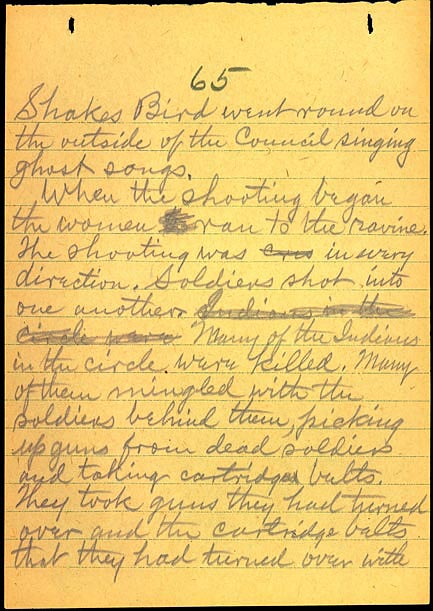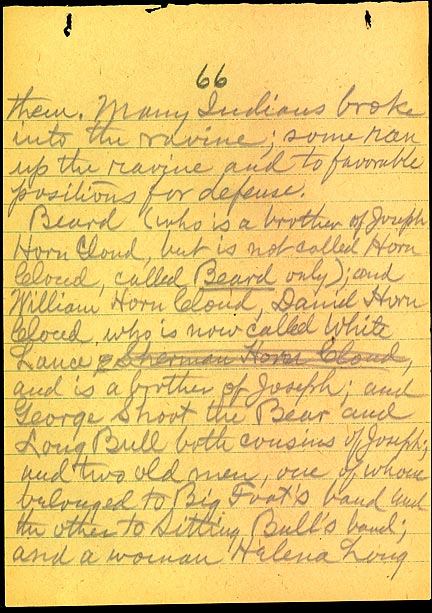![Judge Eli S. Ricker, 1916 [RG1227.PH000001-000002]](https://history.nebraska.gov/wp-content/uploads/2017/08/img_100816.jpg)
Judge Eli S. Ricker of Chadron, Nebraska, April 1916, age 73. The button on his lapel says, “Votes for Women.” [RG1227.PH000001-000002]
Eli Seavey Ricker was born in Maine in 1843. Following his service in the Civil War with Company I, 102nd Illinois Volunteer Infantry, he became a farmer, researcher/writer for a company that published county histories, lawyer, judge, politician, rancher, and newspaper editor.
Ricker was in his sixties in the early 1900s when he began research for a book he intended to call “The Final Conflict between the Red Men and the Palefaces.” He spent years gathering sources and interviewing participants — both Indian and white — about conditions and battles on the Plains in the last half of the nineteenth century. He interviewed at least fifty Native Americans, and was one of the first historians to recognize that their viewpoints were as valid to the history of the Plains as those of whites. He recorded the interviews, along with comments, notes, and source extracts, in small note pads now known as the “Ricker Tablets.”
Enjoy a small portions, pages 65-67, of Ricker’s interview with Joseph Horn Cloud, Wounded Knee survivor, from Tablet 12.
Ricker was also an avid photograph collector. Explore his photo collection online.

(page 65)
… Shakes Bird went round on the outside of the council singing ghost songs.
When the shooting began the women ran to the ravine. The shooting was in every direction. Soldiers shot into one another. [Indians in the circle were] Many of the Indians in the circle were killed. Many of them mingled with the soldiers behind them, picking up guns from dead soldiers and taking cartridge belts. They took guns they had turned over and the cartridge belts they had turned over with them. Many Indians broke into the ravine; some ran up the ravine and to favorable positions for defense.

(Page 66)
Beard (who is a brother of Joseph Horn Cloud, but is not called Horn Cloud, called Beard only); and William Horn Cloud, Daniel Horn Cloud, who is now called White Lance, & Sherman Horn Cloud, and is a brother of Joseph; and George Shoot the Bear and Long Bull both cousins of Joseph; and two old men, one of whom belonged to Big Foot’s band and the other to Sitting Bull’s band; and a woman called Helena Long

(page 67)
Bull and a little son, these all took refuge in the pocket in the ravine, and here William Horn Cloud was killed, and here Beard killed four soldiers, one being stabbed with a knife (a sergeant) the others he shot. White Lance received three wounds in his right leg and one slight [wound] on top of his head; he was borne from here up the ravine by George Shoot the Bear and Peter Stand.
Some cannon were moved to the bank of the ravine & some were planted on Cemetery Hill.
When the firing began there …
![White Lance, Joseph Horn Cloud & Dewey Beard, 1907 [RG1227.PH000025-000004]](https://history.nebraska.gov/wp-content/uploads/2017/08/blog-_-img_103392.jpg)
Brothers White Lance, Joseph Horn Cloud, and Dewey Beard [left to right]. Joseph Horn Cloud was about sixteen years old when he witnessed the Wounded Knee massacre on December 29, 1890. His parents, two brothers, and a sister were among the fatalities. In 1906 he invited Ricker to his home to talk about the massacre.



